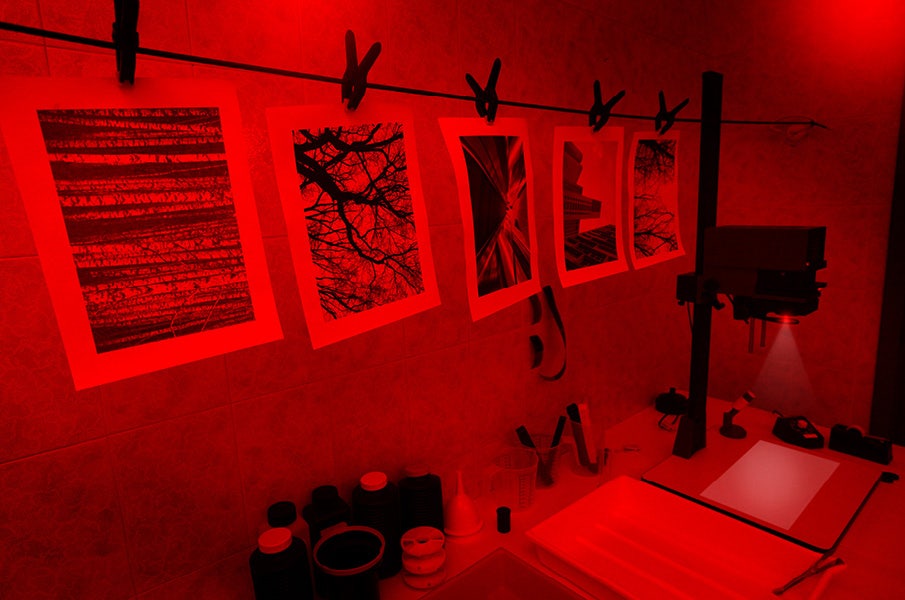
Photographs are more than just visual representations; they are windows to our memories, encapsulating the moments we hold dear. The act of printing these moments transforms intangible digital images into tangible treasures. The history of photo printing is a captivating journey through time, marked by remarkable innovations that have transformed the way we capture and preserve moments. From the days of darkrooms and silver gelatin prints to the digital age of high-quality photo printers, the landscape of photo printing has undergone a remarkable transformation.

The Early Days of Photo Printing
The story of photo printing begins with the invention of the daguerreotype in 1839. This technique involved exposing a silver-plated copper plate to light, creating a one-of-a-kind image. These early photographs were incredibly detailed but required long exposure times and delicate handling.
In 1841, William Henry Fox Talbot introduced the calotype process. It allowed for multiple prints to be made from a single negative. This technique is a significant advancement that paved the way for the mass production of photos.
In the mid-19th century, albumen prints gained popularity. These prints were made using egg whites mixed with salt and silver nitrate, resulting in stunning images with rich details. The albumen process allowed for sharper and more detailed images, contributing to the growing popularity of photographic albums.
The late 19th century saw the rise of gelatin silver prints, which used gelatin emulsions on paper. This process offered greater flexibility and image stability compared to earlier methods. Gelatin silver print became the dominant photo printing technique throughout the 20th century and is still being used in black-and-white photography today.

The Rise of Film Cameras and Film Processing
The emergence of film photography and film processing marked a significant milestone in the history of photo printing. In 1888, George Eastman introduced a game-changing innovation - flexible roll film. Film rolls contained light-sensitive emulsions that exposed images when exposed to light.
Processing film rolls involves a series of chemical reactions in darkrooms. The film was soaked in chemicals to bring out the latent image, fixed to make it permanent, and then washed and dried. Photographers carefully developed and printed their images, a meticulous and artistic process that required skill and patience.
The desire to replicate the vibrant colours of the real world led to the development of colour film. Colour processing involves complex chemical processes to develop and print colour photographs. It all begins with the exposure of colour film to the myriad of colours. Unlike black and white film, which records light intensity alone, colour film is designed to record the various wavelengths of light that correspond to different colours.
To process colour film, the film undergoes a series of intricate chemical processes to bring those latent colours to life. The film is developed in a series of chemical baths to release the coloured dyes. The developed film is then passed through colour filters to isolate the different colour channels. This step is known as colour printing or colour enlarging. The result is three separate colour layers, representing the primary colours of cyan, magenta, and yellow, which, when combined, form the full-colour image.
Digitalisation and the Photo Printing Revolution
The late 20th century brought about the digital revolution in photo printing. This transformation, which began in the late 20th century and continues to evolve, has fundamentally changed how we capture, share, and preserve our visual memories.
The roots of the digital photo printing revolution can be traced to the invention of digital cameras in the late 20th century. These devices replaced traditional film with digital sensors, enabling the capture of images in electronic form.
The digital revolution also impacted the way photos were printed. Traditional darkroom techniques were gradually replaced by digital printing technologies. While digital cameras initially coexisted with film cameras, they eventually gained dominance due to their convenience, immediate results, and the ability to store and manipulate images digitally.
Transforming Memories into Tangible Art
Photo printing technology has undergone significant advancements over the years, transforming the way we preserve and share our memories. This transformative shift has taken photography from a primarily digital to one that celebrates the beauty of tangible, physical prints. Here are some key aspects of modern photo printing technology:
- Inkjet Printing: Inkjet printers have emerged as the preferred choice for photo printing. These printers operate by propelling tiny droplets of ink onto the printing surface, resulting in highly detailed and vibrant prints. Inkjets are particularly popular for at-home photo printing.
- Dye-Sublimation Printing: Dye-sublimation printers employ a unique process where solid dye is converted into a gas and then infused into specially coated paper or other substrates. This technology produces continuous-tone prints with exceptional colour accuracy and durability. Dye-sublimation printers are popular for professional and commercial photo printing.
- Laser Printing: While not as commonly associated with photo printing as inkjets and dye-sublimation, laser printers are capable of producing high-quality photo prints. They excel, especially in black-and-white photography.
- Wide-Format Printing: Wide-format printers are designed to handle larger prints, including photos, posters, and artwork. They offer versatility by accommodating various media types and deliver superior resolution and colour accuracy.
- Print Materials: Photo printing technology also encompasses a wide range of print surfaces, including canvas, metal, glass, acrylic, and other materials, offering various textures and finishes.
- Mobile Printing: Mobile printing technology has simplified the process of transforming digital snapshots into physical prints. With the convenience of mobile devices, users can print directly from smartphones or tablets.
- Wireless Printing: Wireless connectivity options, such as Wi-Fi and Bluetooth, have streamlined the task of sending images to a printer. This feature facilitates quick and hassle-free printing from a variety of devices.
The Role of Photo Printing Services
To facilitate this photo printing revolution, various online and offline services have emerged. These services make it easy for individuals to transform their digital photos into physical prints and creative products.
Online printing services offer a user-friendly platform to upload your digital photos and choose from a wide array of printing options. With Camera House online print, you can print your photos anywhere. All you need to do is simply upload, edit and submit your photos, and they will be delivered or picked up in-store.
Furthermore, find your nearest Camera House store where you can print photos directly from your smartphone or memory card, combining the convenience of digital with the charm of physical prints.
